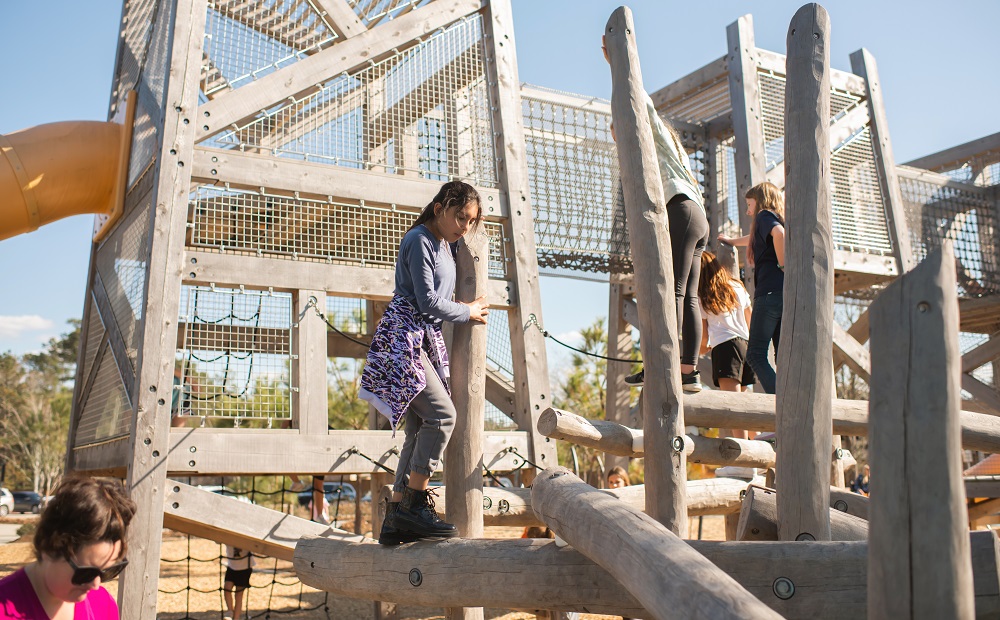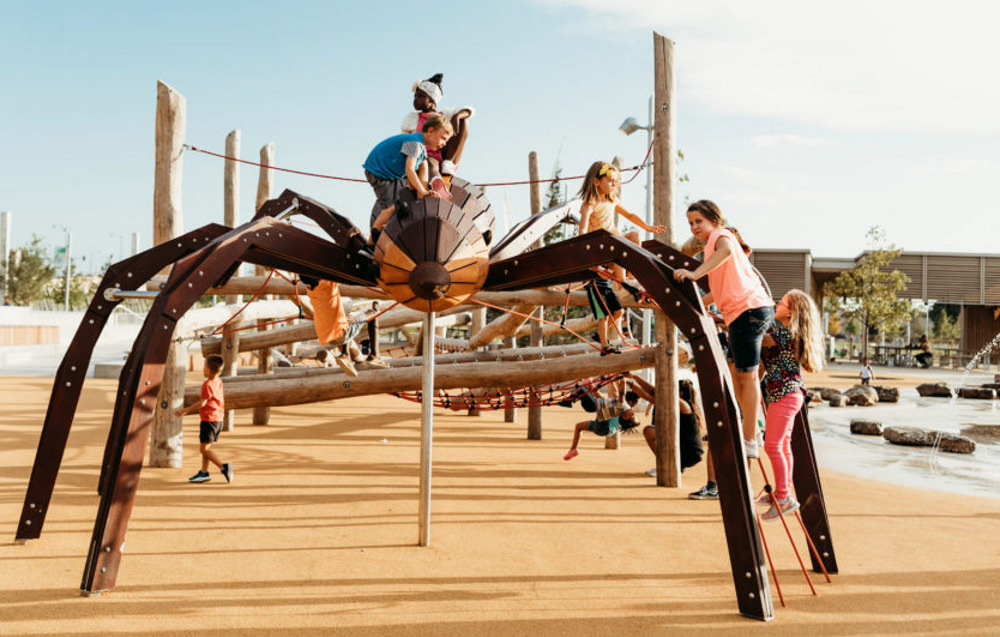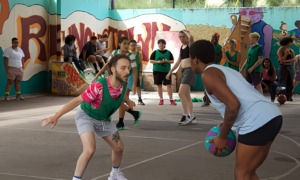A growing trend in playground design aims to eliminate over-programmed playgrounds in favor of more natural ones that lend themselves to unscripted play and inclusion for disabled children.
These new playgrounds feature more open space, abstract play structures, and movable materials like dirt, sand, and water, and are meant to mimic unprogrammed wilderness environments.
 Coming out of a pandemic that saw increased negative mental health impacts on children, unstructured, outdoor play is more important than ever, experts say.
Coming out of a pandemic that saw increased negative mental health impacts on children, unstructured, outdoor play is more important than ever, experts say.
“During the pandemic, with the necessary safety measures to protect our children, the truth is that most children are not exercising as much as they should be,” said Leela Magavi, a child and adolescent psychiatrist based in Newport Beach, California.
One Canadian survey found that less than 5% of children aged 5-11, and less than 1% of youth aged 12-17, were striking the right balance between exercise, sleep, and sedentary behavior under COVID-19 restrictions. But even before the pandemic, children today led more scheduled and indoor-oriented lives than previous generations.
 According to one British study, kids now play outside for an average of only four hours per week, half that of their parents.
According to one British study, kids now play outside for an average of only four hours per week, half that of their parents.
Magavi said that while traditional playgrounds “limit children’s ability to conceptualize their preferences,” natural playgrounds encourage them to exercise their imaginations.
“Exploration of their surroundings and engagement in creative, symbolic play allows children to enjoy their learning experiences,” said Magavi.
Nathan Schleicher, lead playground designer at Earthscape Play, a Canada-based company that specializes in natural and inclusive playgrounds and has worked on projects across North America, Europe, and Asia, agreed.
He said natural playgrounds might retain parts of the natural landscape for climbing or sliding, and re-engineer boulders or stumps as safe play features. When they do feature play structures, they are designed to be abstract, so kids have to problem solve and decide how to navigate them.
“The design lens is always about how many opportunities does a kid have to use their imagination with the space,” Schleicher said.
These design choices invite children to engage in unscripted play, which helps them hone their executive function, critical thinking, and conceptualization skills.
“Unscripted play initiates [a] process of life-long learning, as it warrants problem solving and teamwork,” said Magavi.
This type of play has long-term benefits, too: Research suggests that kids who spend more time engaged in unscripted play during their formative years are less likely to develop behavioral problems later in life. Plus, kids love natural playgrounds. Studies show they spend twice as long playing on them as they do on traditional playgrounds.
Schools and cities are increasingly choosing natural designs when installing new playgrounds or revamping old ones. Cities across the country, including Portland, Oregon, St. Petersburg, Florida, and San Francisco, California, now host natural playgrounds.
According to Schleicher, companies like Earthscape Play that specialize in natural playground design have seen demand skyrocket. Even playground manufacturing giants like Miracle are beginning to offer more natural play features in their product lines.
Designers say these less-programmed playgrounds also lend themselves better to access and inclusion.

Maricruz Photography for Earthscape
Tweens and teens find challenging spaces to play at Pine Cove Park in Klein, Texas.
While all new or renovated playgrounds in the United States must follow guidelines stemming from the Americans with Disabilities Act (ADA), those guidelines stop short of providing every kid with play opportunities.
“It’s a kind of checklist approach,” says Jill Moore, an inclusive play specialist at Landscape Structures, a Minnesota-based organization that designs and manufactures playground features. “But it isn’t a ‘What kind of experience are you having when you get there?’ approach.”
Moore’s work is informed by her experience growing up as a wheelchair user before inclusive design began to take off.
“Most of my memorable and positive experiences of outdoor play … were dependent on the people who made an effort to be creative problem solvers,” she said.
An ADA-compliant playground must have an accessible entrance and spaces where wheelchair users can pull themselves onto a play structure.
But those components only make a playground maneuverable for kids who use mobility aids like wheelchairs or walkers. They do not aim to make playgrounds fun, nor do they make them accessible for kids who require other accommodations.
With inclusive design, designers go beyond basic access requirements, said Schleicher.
“We think about ‘What is the right play element that creates inclusivity versus just the right path of travel,’” he said.
A well-designed natural and inclusive playground might feature accessible swings and sandboxes, an abstract play structure, and quiet places where kids with autism spectrum disorders can recalibrate.
Schleicher said anyone can borrow tips from the naturalistic design trend to create unscripted play opportunities for kids, no matter their budget or the size of their space. While at work, he designs some of the nation’s most innovative playgrounds for large public spaces. But at home in Ontario, Canada, he said, “We have a treeless backyard, small enough to cross in five strides.”
“The recipe for unscripted constructive play starts with creating access to sand and water,” he said. “After that, it’s a matter of regularly changing up the loose parts like old toys, sticks, and acorns, or old kitchen stuff.”
Research shows that when kids explore loose parts whose uses are undefined, like cardboard boxes, pinecones, shells, and stones, they engage in more varied play behaviors.
Regine Muradian, a psychologist specializing in children and adolescents based in Glendale, California, said ensuring kids find time to play outdoors this summer will “help them prepare for when school starts full-time in-person.”
“Kids will need time to readjust,” she said.































